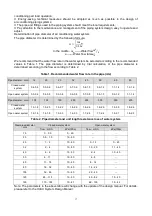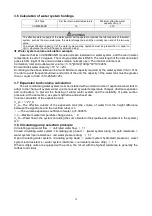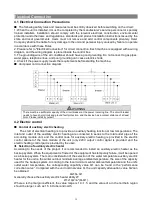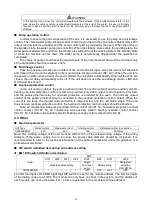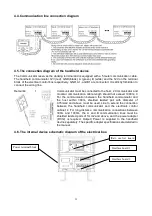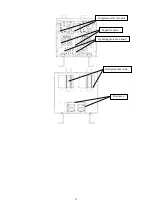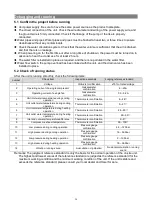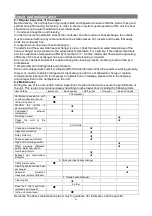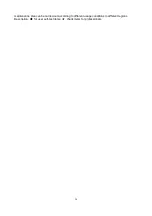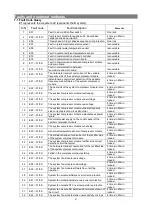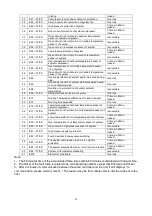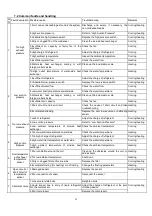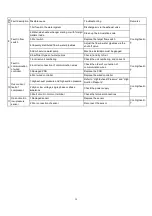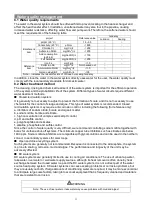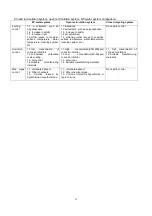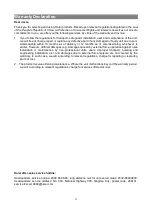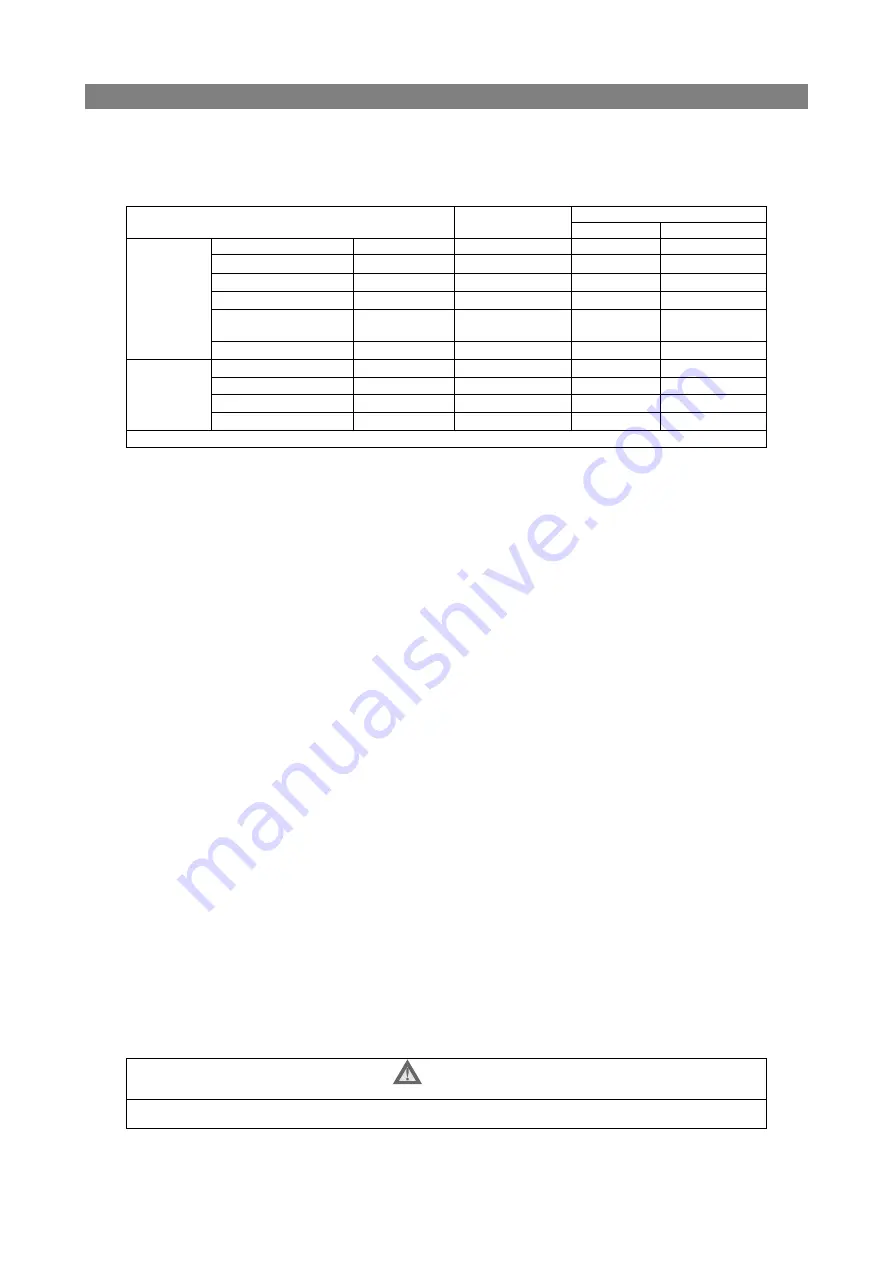
31
Water quality management
8.1 Water quality requirements
The water in the water system should be softened first to prevent scaling in the heat exchanger and
affect the heat transfer effect. In addition, unsoftened water may also foul in the pipeline, causing
increased water resistance, affecting water flow and pump work. Therefore, the softened water should
meet the requirements of the following table.
project
Reference value
tendency
corrosion
Scaling
Benchmark
item
pH pH (25 ° C)
7.5~9.0
○
○
Conductivity (25 ° C)
μS/cm
<
800
○
○
Chloride Cl-
mg(Cl-)/L
<
200
○
Sulfate ion SO42-
mg(SO
4
2-
)/L
<
200
○
Acid consumption
(pH=4.8)
mg(CaCO3)/L
<
100
○
Full hardness
mg(CaCO3)/L
<
200
○
Reference
item
Iron Fe
mg(Fe)/L
<
1.0
○
○
Sulfur ion S2-
mg(S
2-
)/L
Not checked out
○
Ammonia ion NH4+
mg(NH
4
+
)/L
<
1.0
○
Silicon oxide SiO2
mg(SiO
2
)/L
<
50
○
Note: ○ indicates the relevant factors of corrosion or scaling tendency
In addition, since the water in the water system directly uses water for the user, the water quality must
comply with the local sanitary standards for domestic water.
8.2 Water treatment method
The cleaning, rinsing and chemical treatment of the water system is important for the efficient operation
of the system and the probabilistic life of the system. Different types of water circuits require different
water treatment methods.
■
Closed recirculation system
It is generally not necessary to adjust to prevent the formation of scale, and it is not necessary to use
chemicals for the control of sludge and algae. This type of water system is recommended. Closed
recirculation systems may require anti-corrosion control, including the following (for reference only):
a, inhibitors of sodium nitrite, borate and organic matter.
b, sodium nitrite, borate and silicate.
c, high concentration of complex acid salt pH control.
d, pH and sulfite control.
e, polyphosphites and silicates.
f, alkaline, phosphate and sulfite control.
Since the control of water quality is very difficult, we recommend controlling sodium nitrite together with
borax for urethane shut-off systems. The minimum copper tube inhibitors such as silicates are below
1400 ppm. Sodium nitrate inhibitors are compatible with glycol solutions and can be used in the northern
zone or in secondary systems for solar loops.
■
Open and close recycling system
Such systems are generally not recommended. Because it is connected to the atmosphere, the system
is prone to scaling, corrosion, mud and algae. The performance and longevity of the unit may be
adversely affected.
■
DC water system
DC water systems are generally limited to use in cooling air conditioners. The use of urban tap water,
lake water, river water or well water supply sources, although its heat removal is often done by heat
exchange between the closed water loop and the DC water system, it is not a direct part of the water
source heat pump system. DC water systems can cause scaling problems or corrosion problems, but
they are usually not both. If large amounts of conditioning water are required, it may be more economical
to anticipate large scale factors, taking into account equipment that is frequently cleaned and materials
that are resistant to corrosion.
WARNING
Note: The use of river water or lake water may cause problems with mud and algae!
Summary of Contents for CA0065EANR
Page 8: ...5 1 2 Main components of the unit ...
Page 15: ...12 Installation 3 Diagram of arrangement of multiple chiller units Unit mm ...
Page 37: ......
Page 38: ......
Page 39: ......
Page 40: ......

